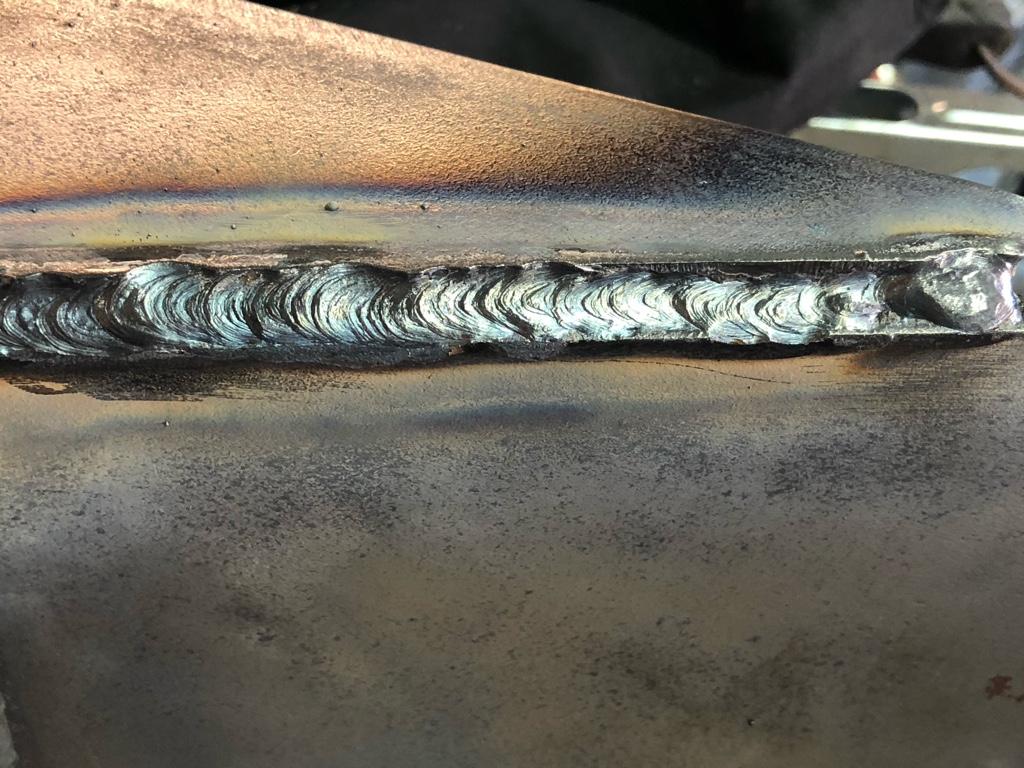Preventing Weld Undercut Made Easy: Key Techniques Revealed
Preventing Weld Undercut Made Easy: Key Techniques Revealed
Blog Article
Vital Tips for Welders: Stopping Undercut Welding and Ensuring Stronger Weld Joints
In the world of welding, attaining long lasting and solid weld joints is the cornerstone of generating top notch job. One common difficulty that welders usually experience is undercut welding, which can compromise the honesty of the weld joint.

Recognizing Undercut Welding
Undercut welding is a common welding flaw that takes place when the weld metal fails to properly fill up the groove and results in a groove-like depression along the weld grain. This problem compromises the weld joint, making it vulnerable to cracking and failing under tension. Damaging can be brought on by numerous factors, including extreme welding current, high welding speed, improper electrode angle, incorrect electrode dimension, and bad welding strategy.
Among the major reasons for undercut welding is an inequality between the welding current and the welding speed. If the welding current is too high or the welding rate is too fast, the weld steel may not properly fill up the groove, leading to damaging. Furthermore, utilizing an electrode that is too large can cause a similar outcome, as the excess steel can not appropriately stream right into the groove.
To avoid undercut welding, welders ought to guarantee they are utilizing the correct welding specifications, keep an ideal electrode angle, pick the proper electrode size, and method correct welding techniques. By addressing these elements, welders can lessen the danger of damaging and develop more powerful, much more reputable weld joints.
Appropriate Welding Strategy
Reliable welding technique plays a crucial duty in ensuring the top quality and honesty of weld joints. One fundamental element of appropriate welding technique is maintaining the correct angle and range in between the welding gun and the work surface.
Additionally, a constant and consistent hand activity is vital for developing solid and long lasting weld joints. Welders must intend for smooth, consistent movements to make sure also circulation of the weld product. Proper control of the welding gun and filler product is additionally crucial to accomplishing optimal infiltration and blend.
Moreover, managing the warmth input and selecting the ideal welding criteria based upon the material being welded are important consider accomplishing premium welds - Preventing weld undercut. Welders ought to adhere to the advised setups supplied by welding procedure specs and adjust them as required based upon the specific demands of the job. By understanding correct welding methods, welders can significantly enhance the stamina and dependability of their weld joints
Choosing the Right Electrode
Preserving the right angle and distance between the welding weapon and the workpiece is basic when considering the significance of selecting the ideal electrode in welding applications. The option of electrode plays an important duty in figuring out the high quality and strength of the weld joint. Electrodes can be found in numerous kinds, each developed for certain objectives and products.
First of all, choosing the appropriate electrode size is vital. Thinner electrodes are ideal for welding thin materials, while thicker electrodes are better for thicker products and greater heat applications. Matching the electrode diameter to the thickness of the work surface aids accomplish a balanced weld.
Secondly, comprehending the material composition of the electrode is vital. Various electrodes are made for welding certain materials like steel, stainless-steel, aluminum, or cast iron. Utilizing the correct electrode material ensures good fusion and reduces the threat of problems in the weld.
Last but not least, taking into consideration the welding position investigate this site and method is vital when picking the electrode kind. Certain electrodes are better matched for upright or overhead welding settings, while others work well for flat or straight settings. Selecting the right electrode based upon the welding method improves the overall weld top quality and honesty.
Preparing the Base Steel
To guarantee a successful welding process, what preliminary steps should be taken when preparing the base steel for welding? Additionally, any existing weld material or residue from previous welding must be gotten rid of to guarantee a clean surface for the new weld.

Conducting Post-Weld Examinations

After carrying out these assessments, welders need to compare the results against market standards and project requirements to guarantee that the weld joint fulfills all essential standards. Any inadequacies or discrepancies uncovered throughout the post-weld inspection needs to be without delay resolved via suitable corrective measures to ensure the weld's integrity. By diligently carrying out post-weld examinations and quickly resolving any issues, welders can promote the quality and reliability of their job, ultimately adding to the security and longevity of the welded frameworks.
Verdict

Finally, preventing undercut welding and making certain stronger weld joints require a mix of appropriate welding technique, picking the appropriate electrode, preparing the base metal appropriately, and conducting post-weld inspections. By understanding the root causes of undercut welding and carrying out the essential safety measures, welders can create top quality weld joints that fulfill market requirements and make certain the structural stability of the welded parts.
Undercut welding is an usual welding defect that occurs when the weld steel fails to appropriately fill the groove and results in a groove-like anxiety along the weld grain (Preventing weld undercut). Undercutting can be created by different elements, consisting of too much welding existing, high welding speed, inappropriate electrode angle, wrong electrode dimension, and inadequate welding strategy
One of the primary factors for undercut welding is an Source imbalance between the welding existing and the welding speed. If the welding current is official site too high or the welding speed is as well quickly, the weld metal might not properly fill up the groove, leading to undercutting.Maintaining the correct angle and range between the welding gun and the work surface is fundamental when taking into consideration the value of picking the right electrode in welding applications.
Report this page